Part 93: Victoria: Chapter 27 - Last Stands: 1915 - 1920
1915-1920: Last Stands
The automobile industry continues to expand in 1905 with two new major automobile factories being opened.

In Southeast Asia, the last of the uncolonized kingdoms, Manipur, has gathered a large army to make their stand. So far, the Byzantines in India have refrained from conquering the little kingdom, and crown prince Waldemar, having just been appointed chief of the army, decides to capitalize on their hesistance.
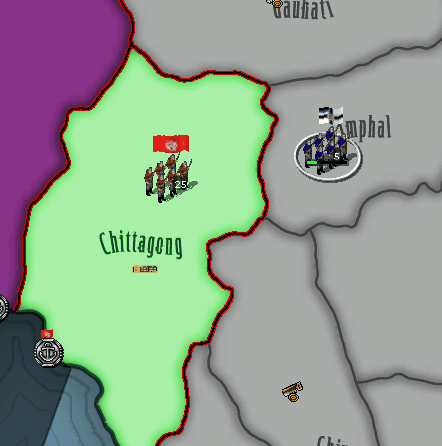

Ten divisions are shipped from Germany to the theater, and together with the local colonial cavalry, attack the city of Chittagong in October of 1915.

The large army of irregulars offer surprisingly fierce resistance, inflicting thousands of casualties on the Germans before the combined weight of German artillery, tanks and guns finally routs them. It is the first major engagement for the Bismarck, which performs rather poorly in the asian climate, most of them breaking down before the engagement even begins. Nonetheless, the sight of the moving steel colosses showed to have a devastating psychological impact on the irregular troops of Manipur.


Manipur is annexed to Germany, and India, which considers the province a part of its core lands, is approached about a trade - Chittagong in exchange for the oil-rich province of Dibrugath and a substantial cash payment. The Byzantine Emperor agrees to the trade.
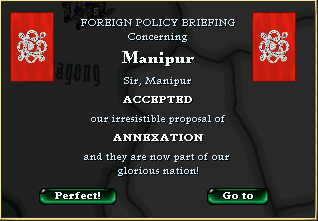
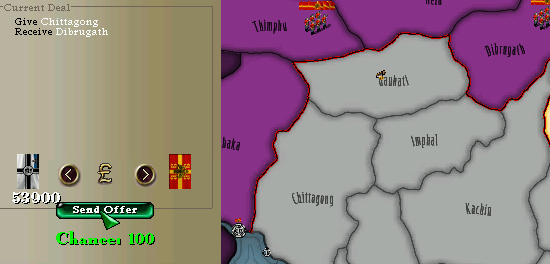
As always, technological progress continues, this time into cultural matters and the development of electrical generators.


War breaks out between Imperial India and Turkestan, with the former emerging as victor and taking several border provinces in the peace.

Tarwajal makes its last stand against Jadakal in November of 1918, as two divisions of Tarwajali troops desperately defend the nation's capital from a massive Jadakali army. After two days of fighting, the Tarwajali capital surrenders, and the nation is annexed to Jadakal, completing the Jadakali conquest of their claimed lands.

The Persian Empire's own last stand comes in September of 1919, as their remaining lands are annexed by the Union of Rome.
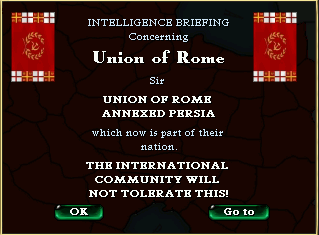
A new ship design, the battlecruiser, is developed in October, and construction begins on several such ships.
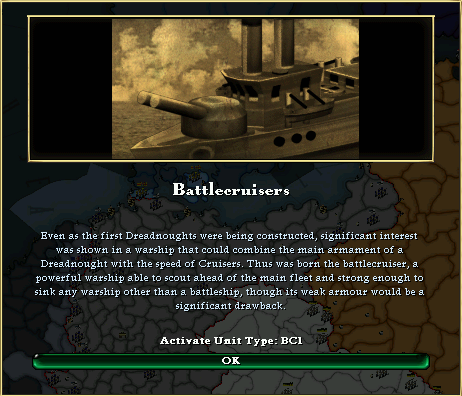
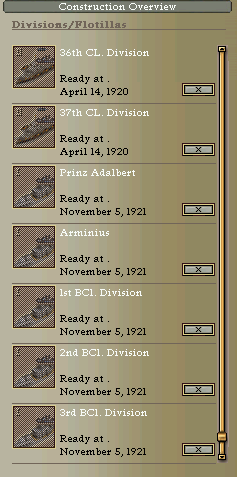
As 1919 ends, so does a war between Yuan China and the UK in which the latter takes several provinces in Manchuria and Mongolia.
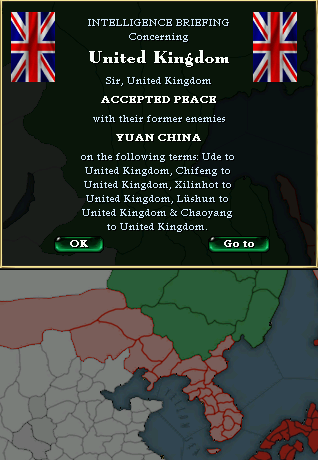
1920 and the new Reichstag election comes around. There is a sense of foreboding at the Reichstag, as though the assembled are gathered for the last time, carrying out of the last remaining rituals of a dying era. The increasingly old and frail Friedrich II calls the Reichstag to order, presenting the list of permitted parties which may be chosen to head the Reichstag for the next twenty years.

There are also three banned factions, the long-time banned Republican Party being joined by the German Communist Party and the Fascist Party, who are felt to be dangerous challengers to the Monarchy.
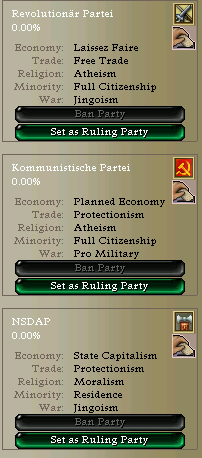
Germany - Overview & Budget
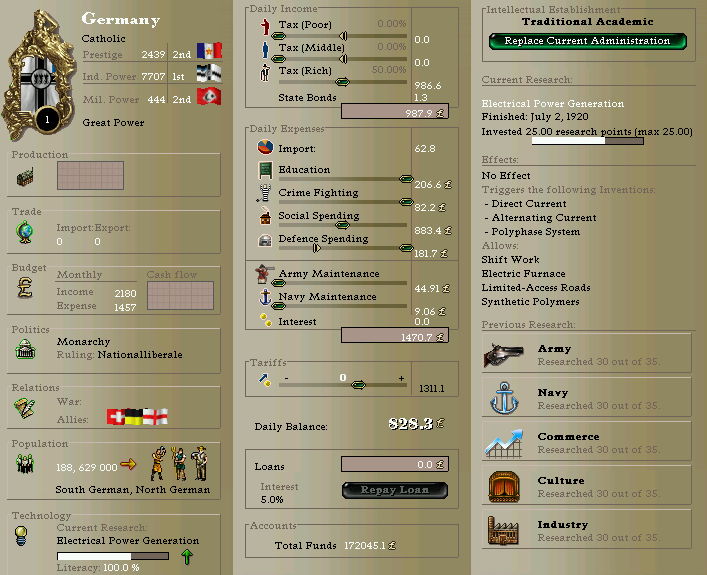
Germany - Politics & Diplomacy

Resource Production
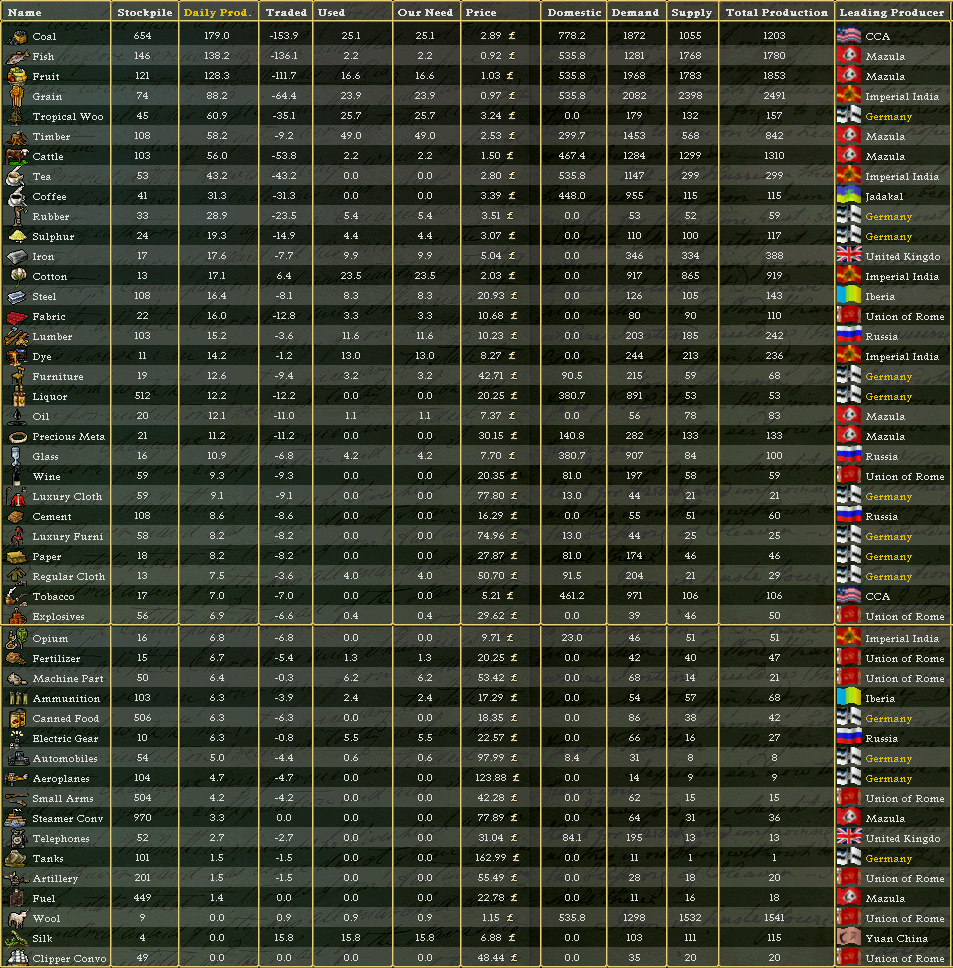
National Rankings
(Note, Union of Rome actually has about 6500 industry, debt is causing it to jump down)
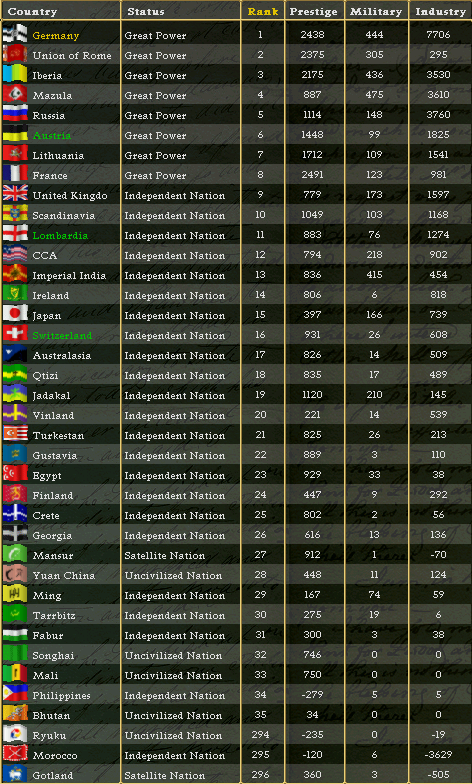
National Populations

National Armies
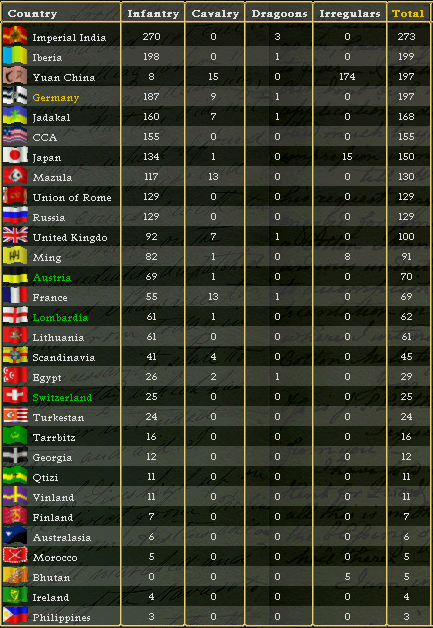
National Navies

Voting
Option A: Nationalliberale - Platform: Free enterprise, increased military spending, interventionism abroad, major expansion of the German navy
Option B: Zentrumspartei - Platform: Free enterprise, no change in military spending, limited interventionism in Europe only, expansion of the German coalition in Central Europe
Option C: Christsoz. Arbeiterpartei - Platform: State development of railroads and existing industries, no change in military spending, limited interventionism in Europe only, strengthening of the Lombard League for future reconquest of Italy
Option D: Nationale Partei - Platform: State development of railroads and new industries, increased military spending, interventionism abroad, conquest of Egypt's Swahili coast
Option E: Sozial. Arbeiterpartei - Platform: State development of railroads and new industries, decreased military spending, non-interventionism abroad, increase of social reforms